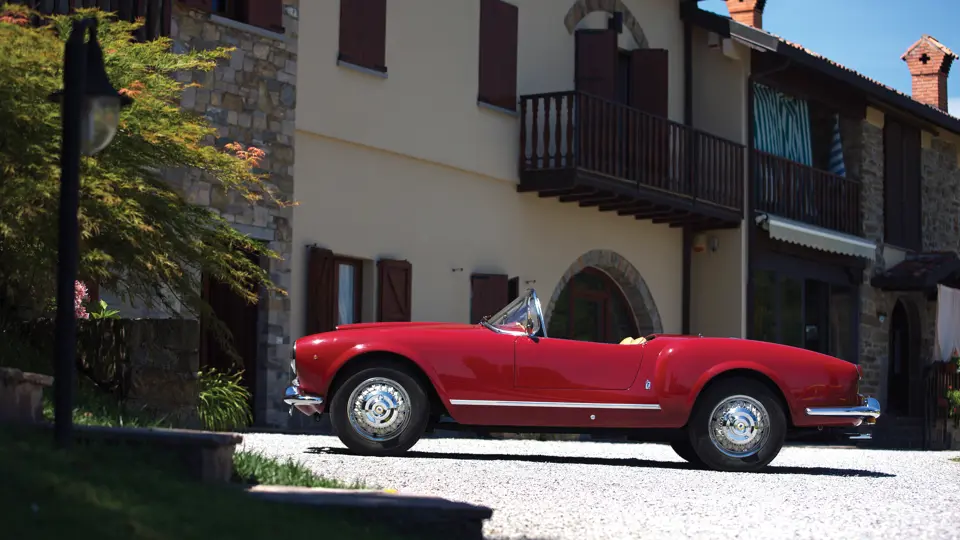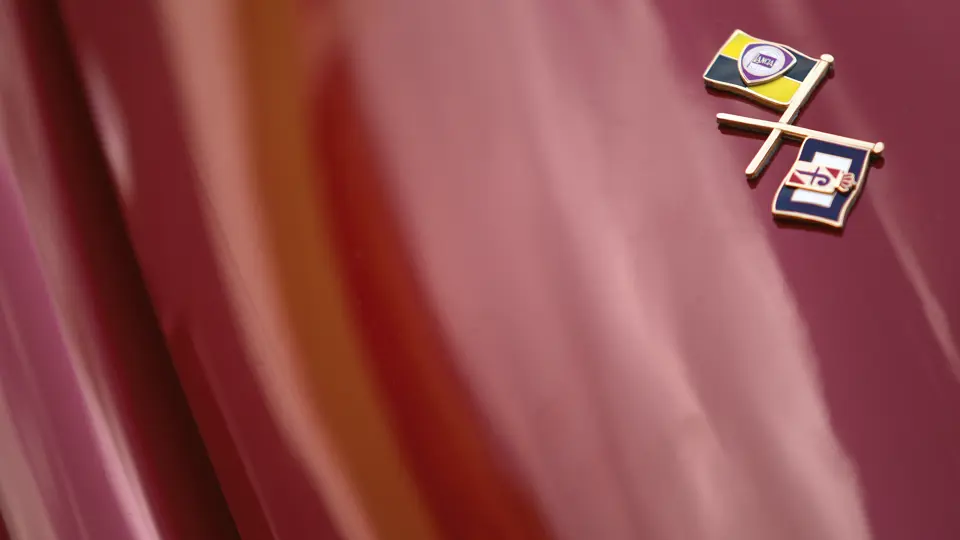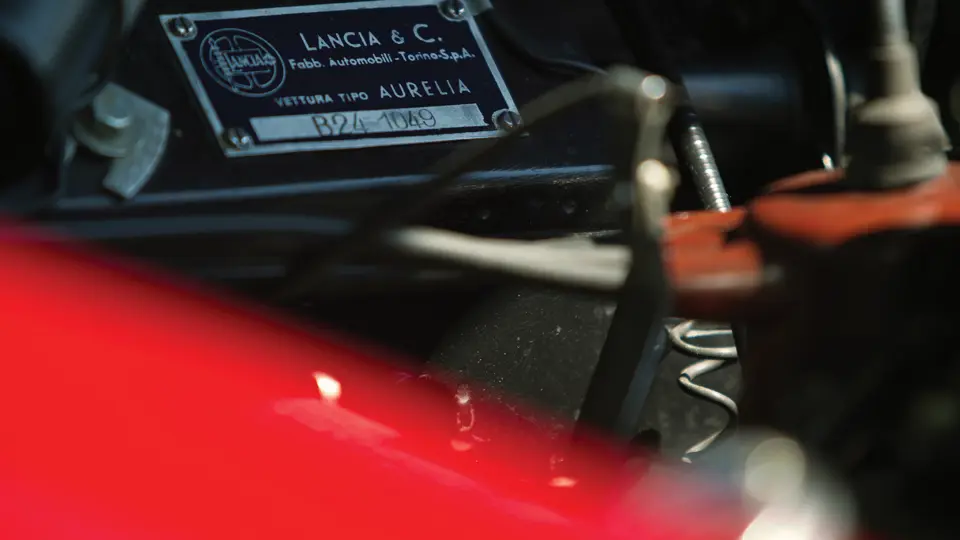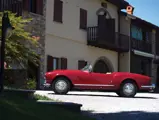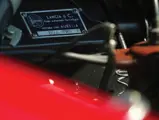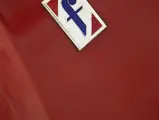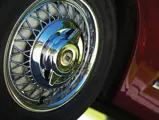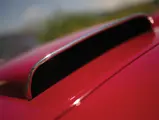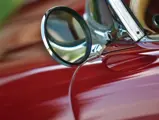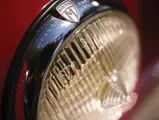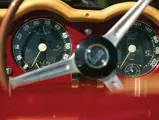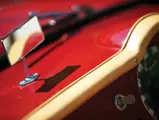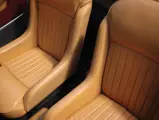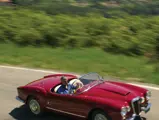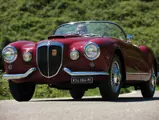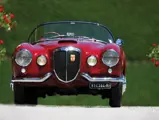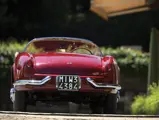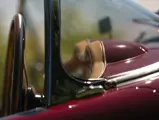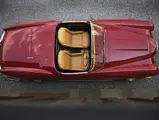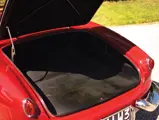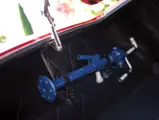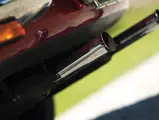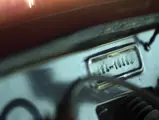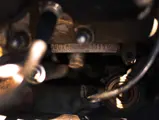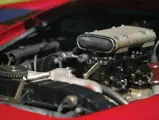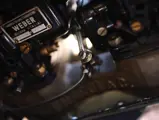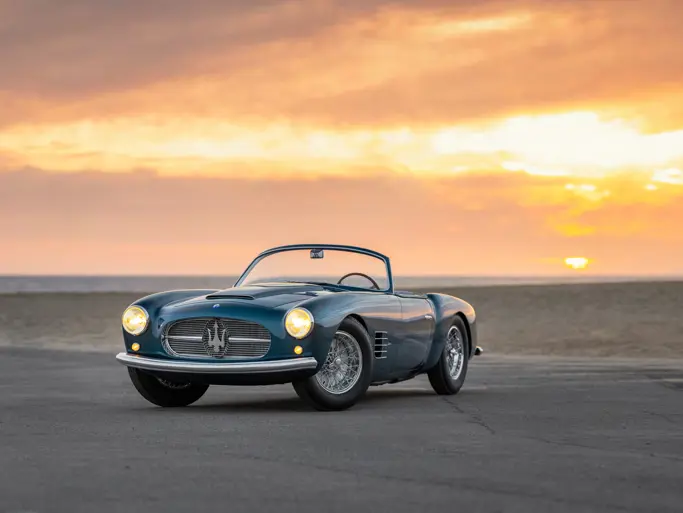118 bhp, 2,451 cc V-6 engine with dual Weber carburettors, four-speed manual transmission, independent sliding pillar front and semi-trailing arm and coil-spring rear suspension, and four-wheel drum brakes. Wheelbase: 2,450 mm
Lancia’s first post-war car, the revolutionary Aurelia, appeared in 1950. Its combination of the first production V-6 engine with a balanced transaxle gearbox and inboard rear brakes were revelations in post-war Europe. The initial B10 saloon was quickly followed by a coupé, the B20, which was built on a shortened platform. Although the Aurelia was built with a semi-unitary body, a platform for coachbuilders (the B50) was also offered, on which Pinin Farina built a four-seat cabriolet. However, it was felt that a proper open two-seater sport model was required, especially for the U.S. market.
The answer was the B24 Spider America, which was launched in 1954. Pinin Farina’s shapely roadster was built on a wheelbase that had been shortened a further 210 millimetres from the coupé, and it featured a dogleg wraparound windshield and side curtains, with no external handles for doors or the boot to interrupt the almost liquid lines. As Lancia had established itself in the early 1950s as a force in international competition, it is not surprising that hints of the marque’s D24 racing car could be seen in the look of the new sport car. After only 240 of the Spider Americas were built, a heavily revised model, the B24 convertible, was introduced in 1956. With an eye towards creature comforts rather than sportiness, the convertible added weight with roll-up windows, higher doors, more interior furnishings, and a more upright windshield. At once, the Spider America was destined to be set apart.
The Spider America offered here is recorded by historian Francesco Gandolfi as having been originally delivered in red with a tan interior and right-hand drive. It was formerly owned by Carla Liverani, who had inherited it from her brother. Ms Liverani eventually sold the Lancia to Fabrizio Verzaro, who passed it to well-known Spider America restorer Giancarlo Kappa.
Mr Kappa proceeded to restore the car in the mould of B24-1021, the right-hand-drive special that Lancia and Pinin Farina built for Guido Maria Terzi, the brother-in-law of famous Lancia privateer driver Ingegner “Ippocampo” Castiglioni. The car was equipped with dual driving lights, which were useful for the Mille Miglia, and a 1955 B20-style dashboard with easy-to-view Jaeger instruments, including a tachometer. Mr Kappa intended to restore the car, enjoy it, and then return it to original specifications before it was sold, but he eventually wound up selling the car as-completed to its current owner.
The car remains in excellent overall condition and includes fine paintwork, upholstery, and chrome trim throughout. As presented, it is equipped with Tour de France-style seats, with the original seats being supplied loose with the car. It is fitted with the desirable Nardi kit, which includes the dual Weber carburettors, and it rides on polished chrome wheels with special hubcaps, like the ones fitted to the car that was presented at the Brussels Motor Show in 1955. All of the numbers on the car are noted to correspond with the original data card. Information provided has been supplied from an official appraisal. This car is also finished in its original colour combination.
Whilst several Aurelia Spider Americas have been brought to market in recent years, they are almost always the U.S.-delivery, left-hand-drive cars. Offered here is an original right-hand-drive car in the market for which it is most well suited. It is equipped with the desirable Nardi kit and has numerous features that are reminiscent of those on one of the most famous racing Lancias of its time. The car has ASI and FIVA passports, making it Mille Miglia eligible, and it would be a thrilling drive on a twisting Italian road or a straight British motorway.

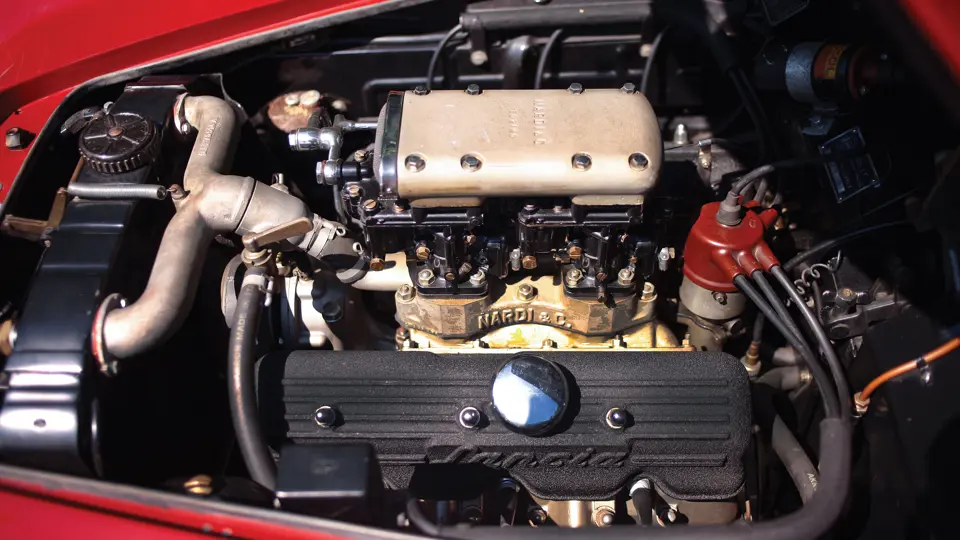


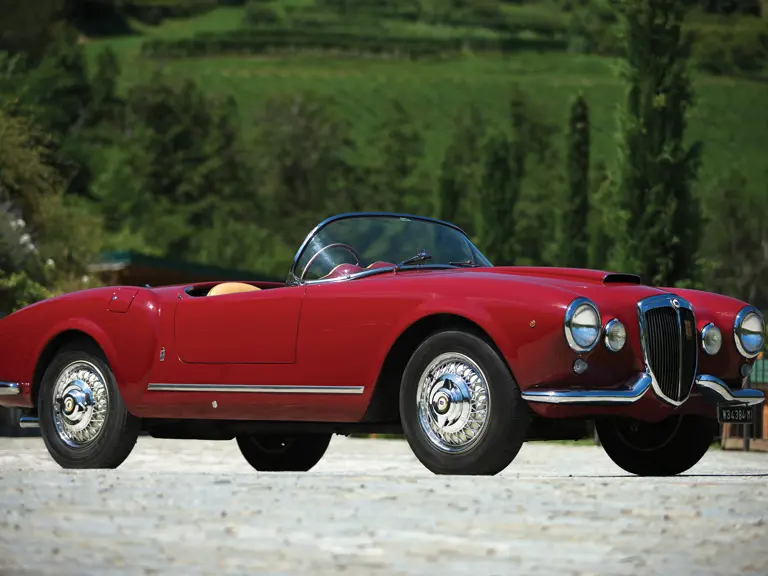


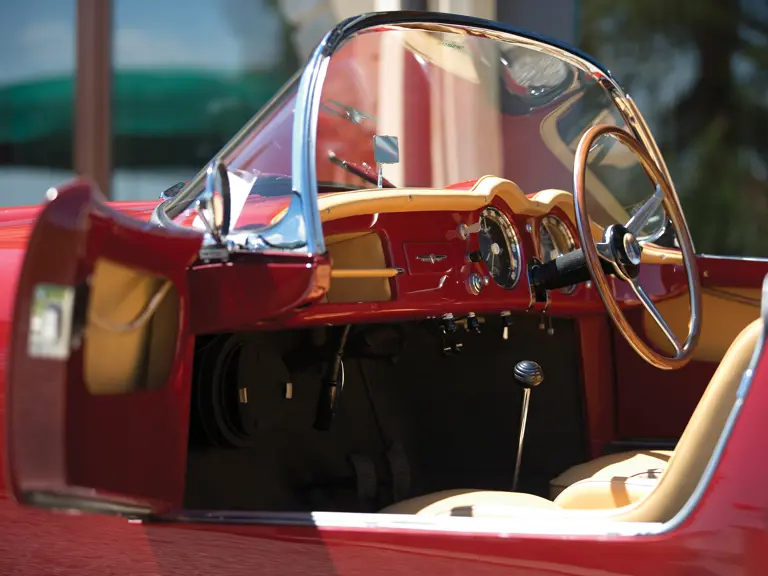
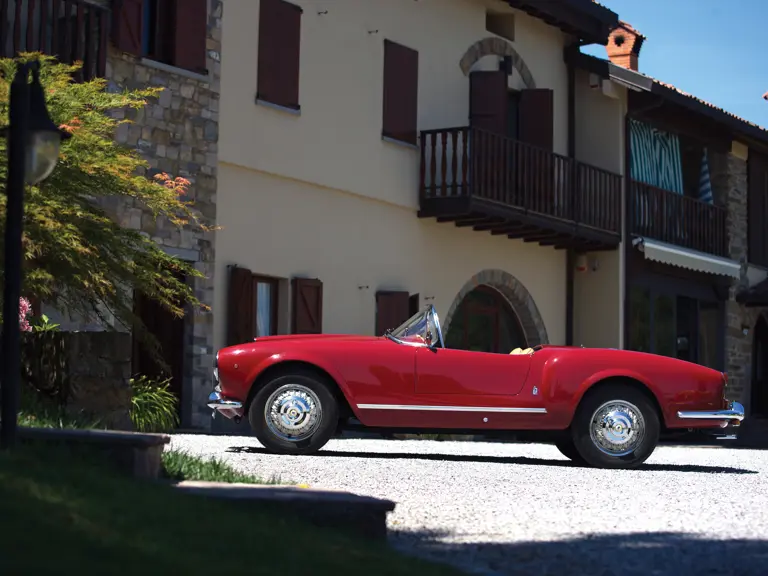

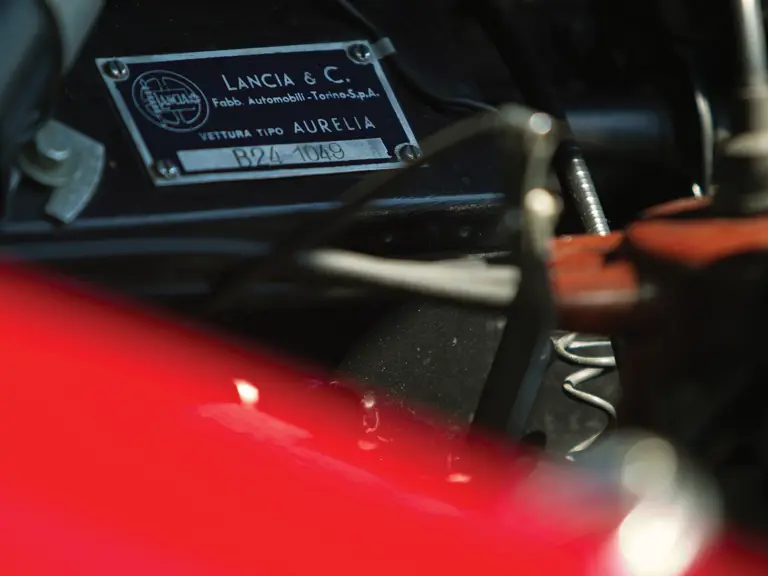
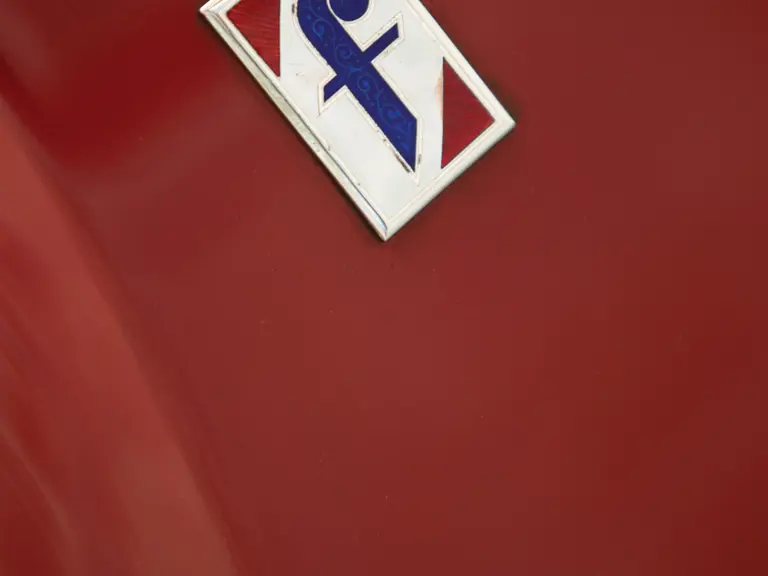
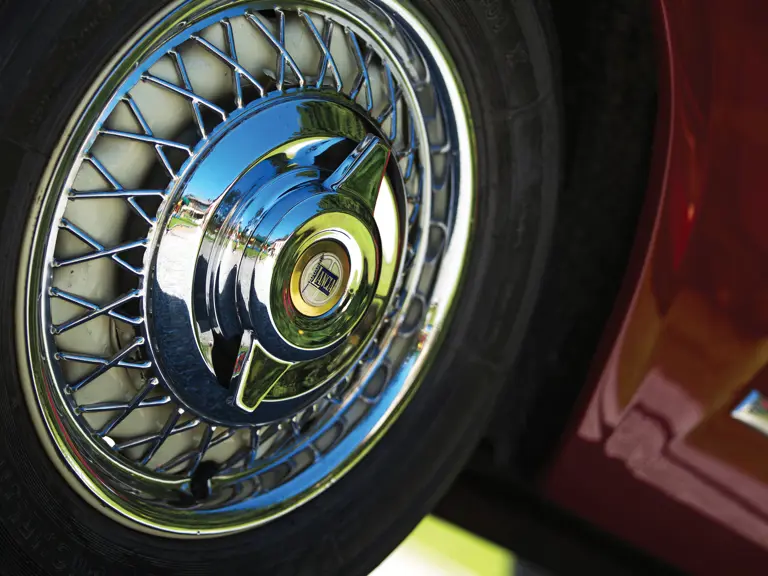

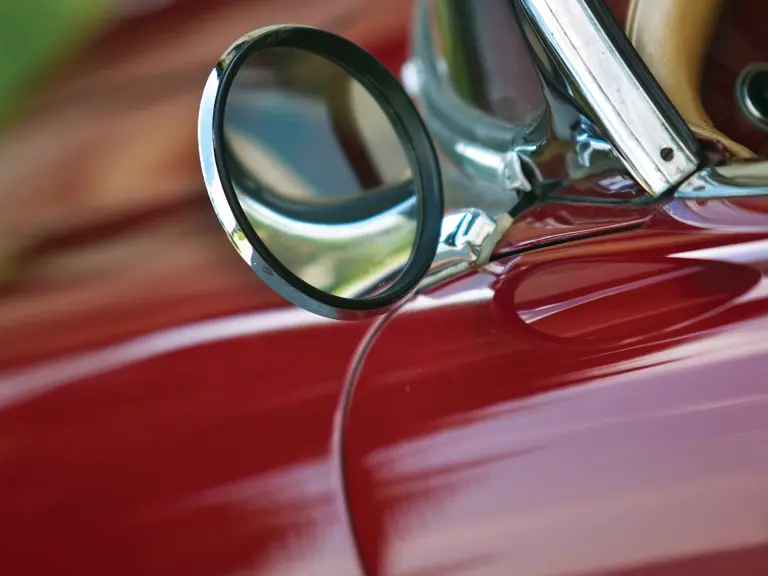
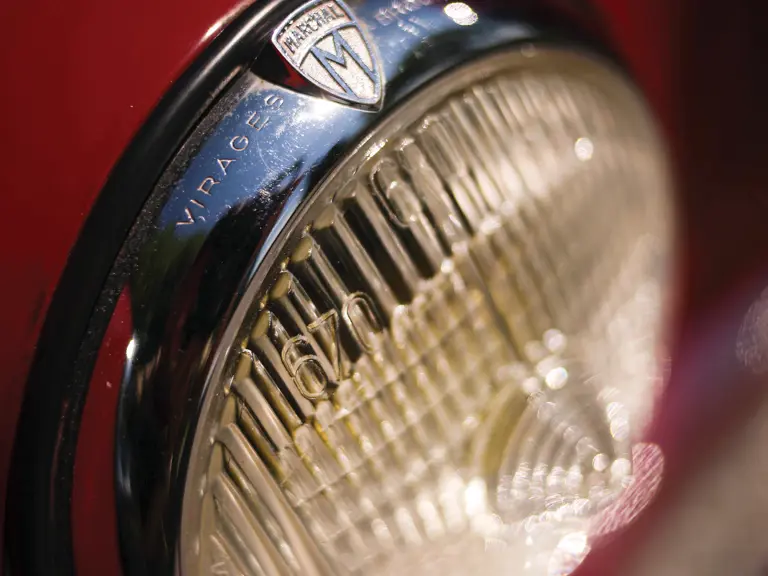
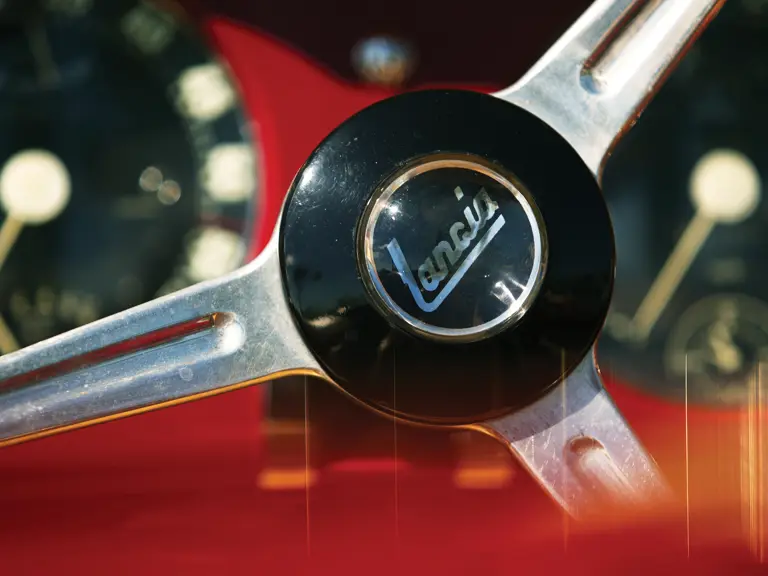
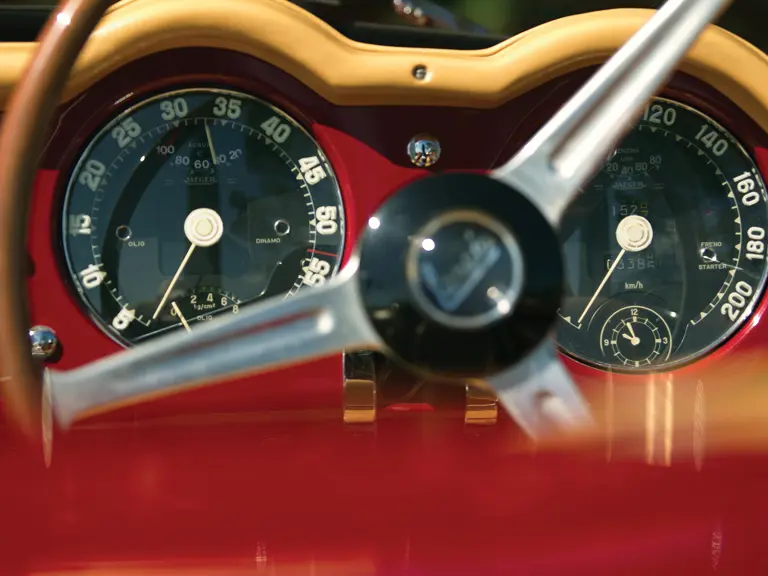
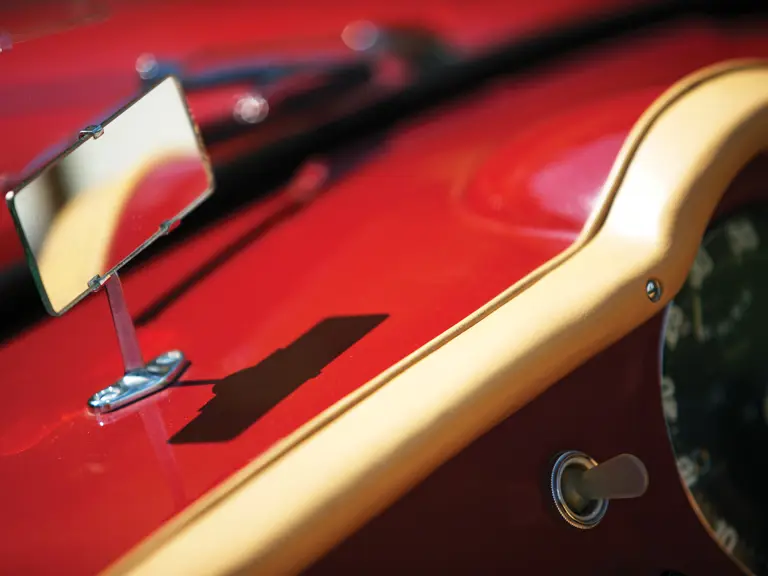
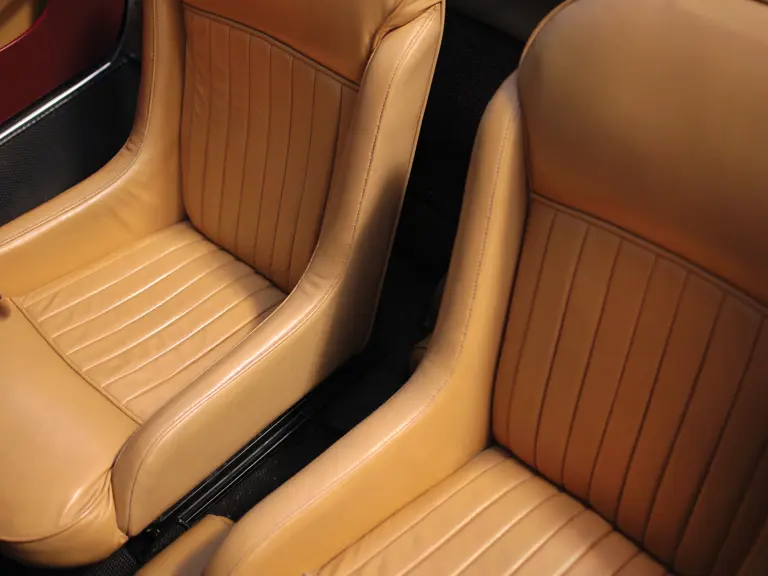
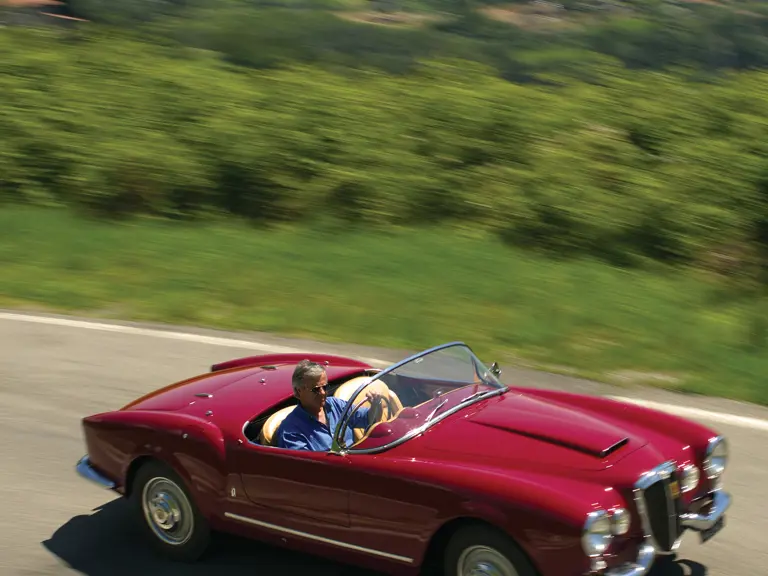
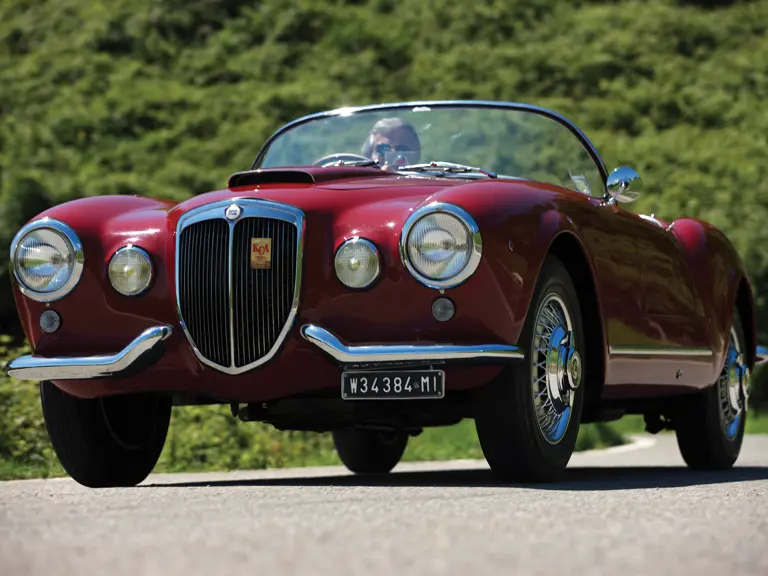
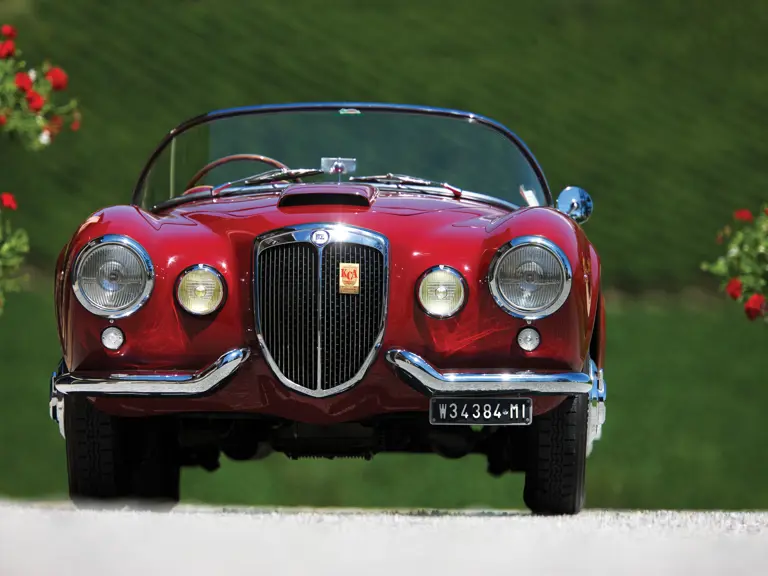
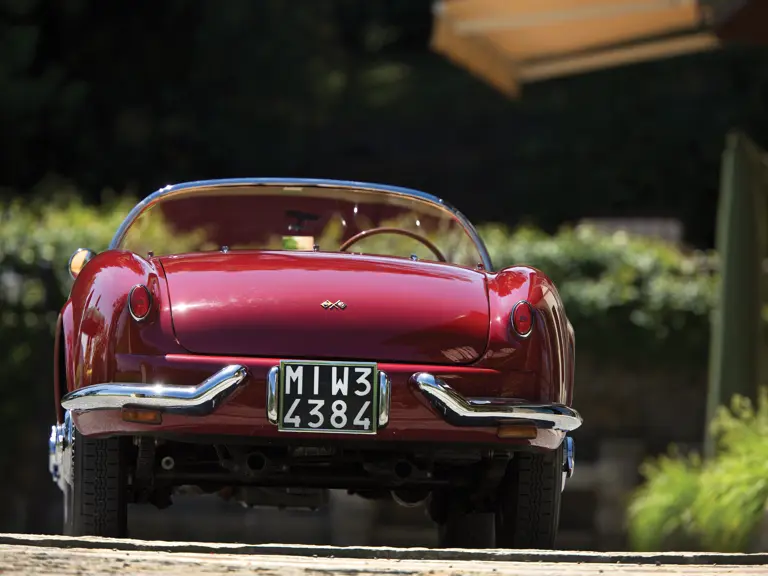
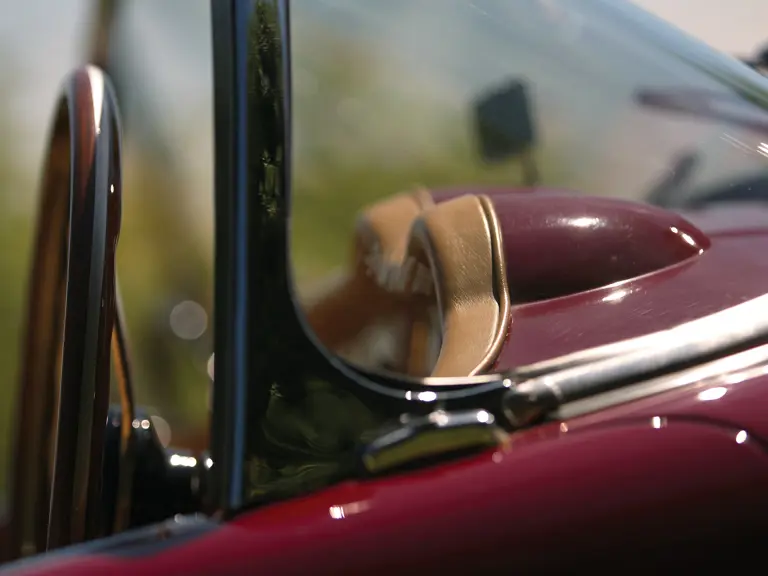
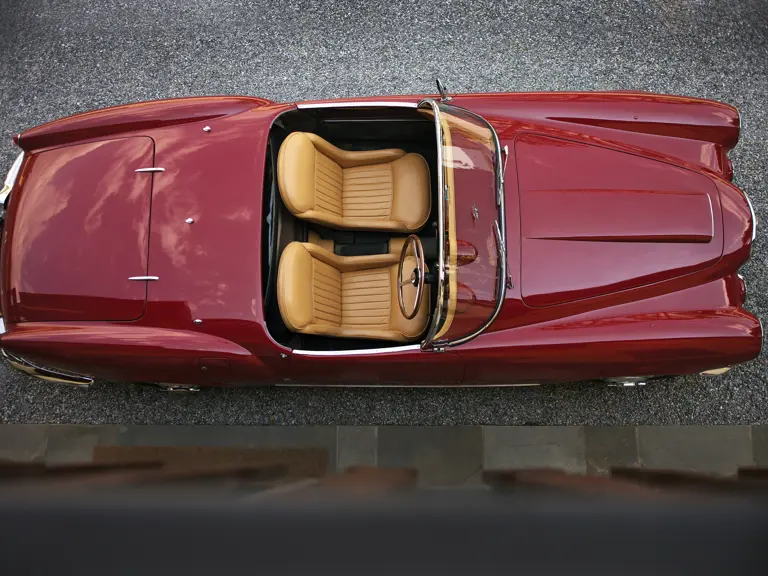
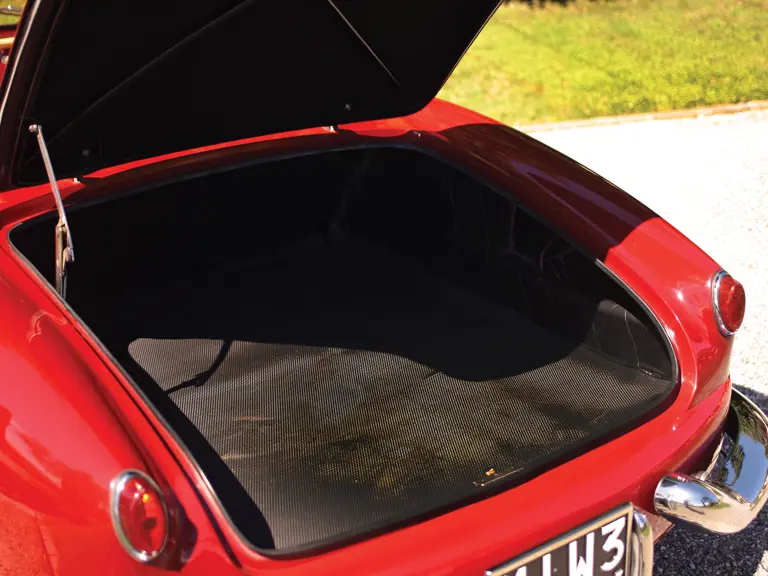

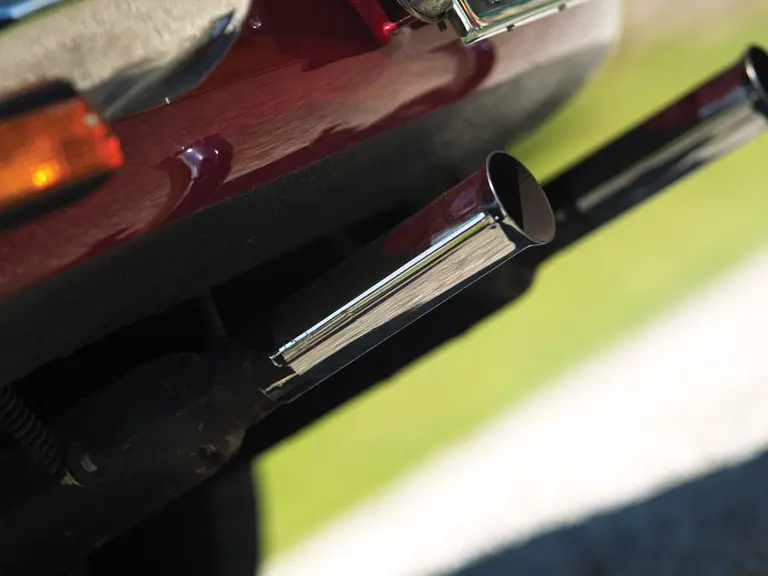
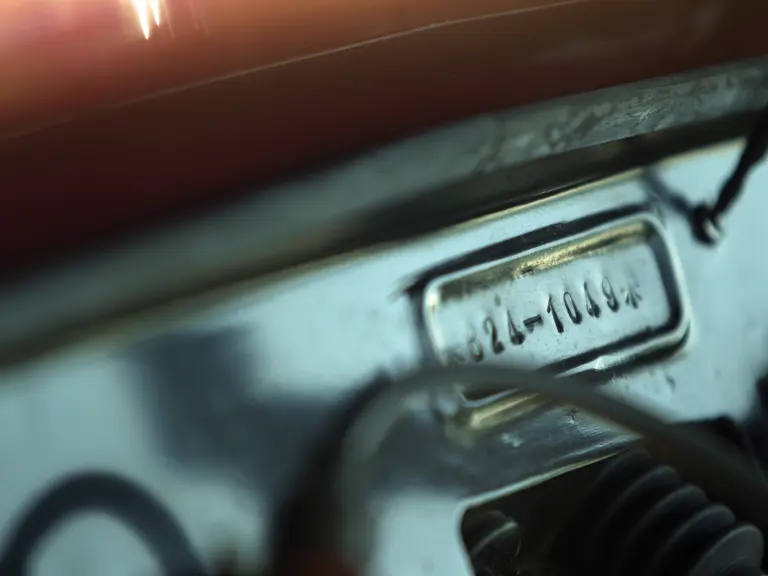
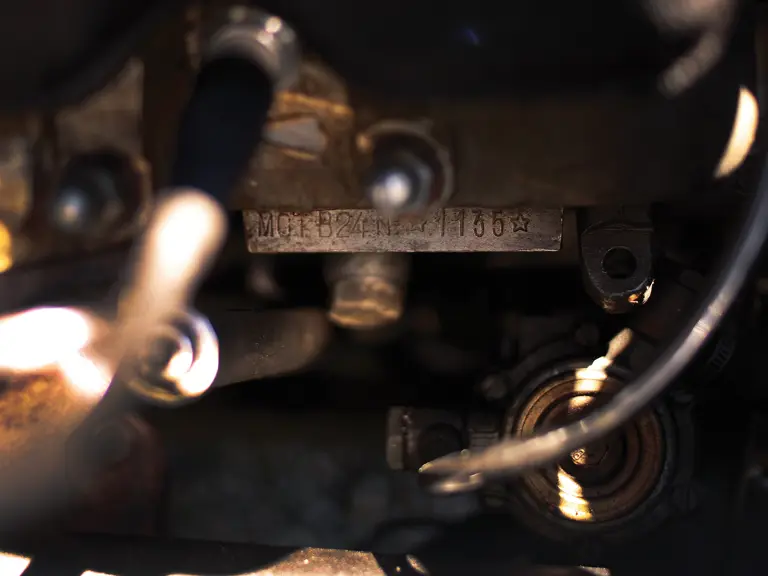
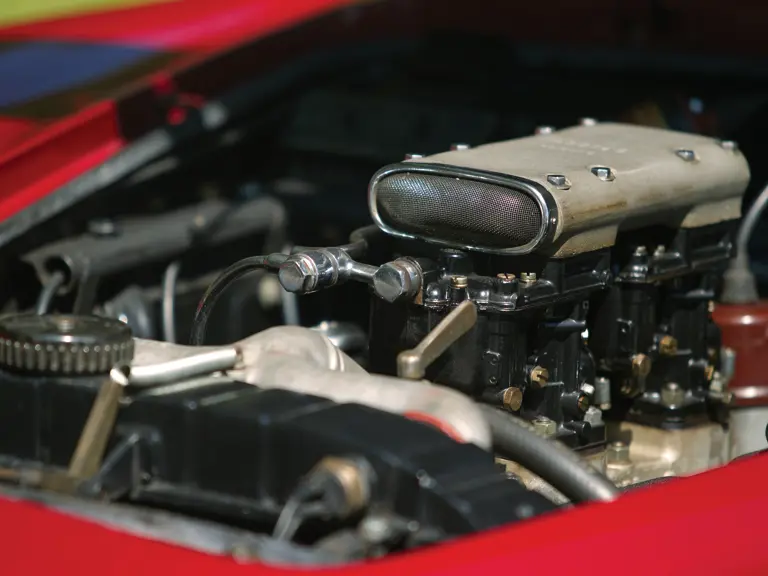
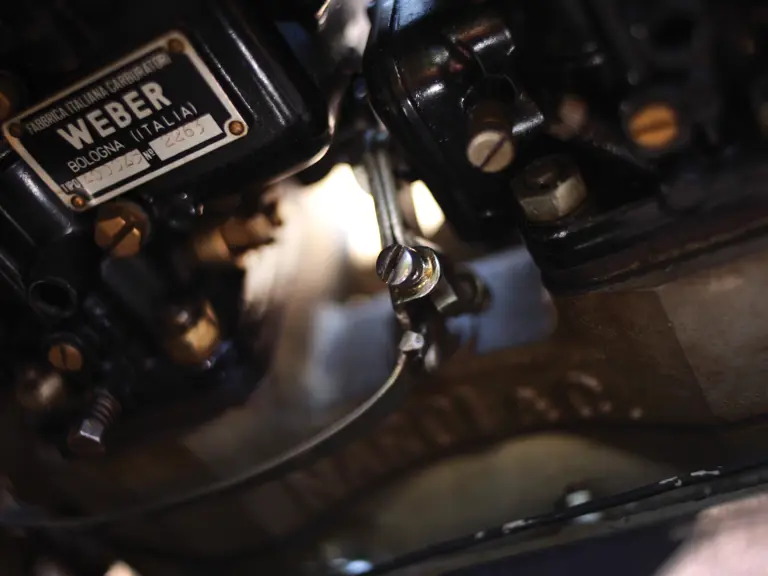
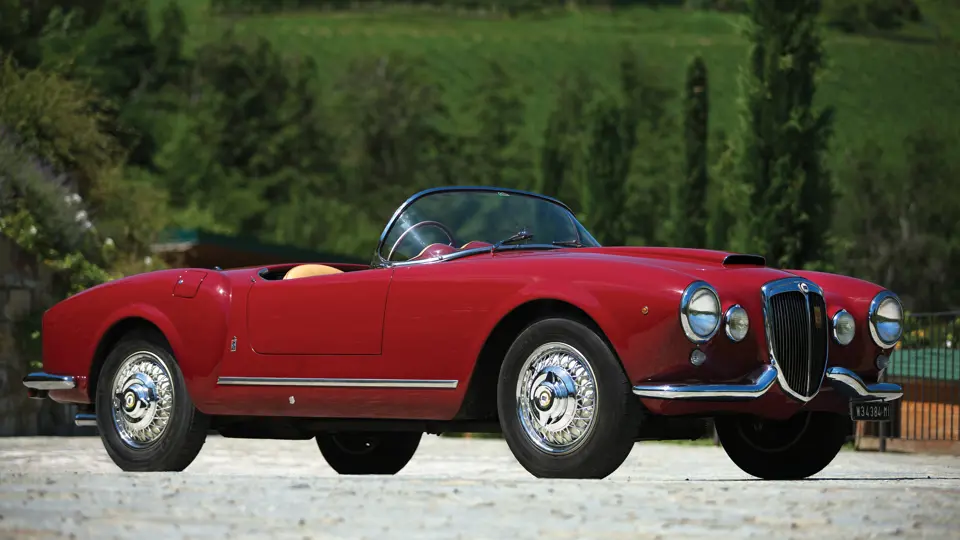
 | London, United Kingdom
| London, United Kingdom
